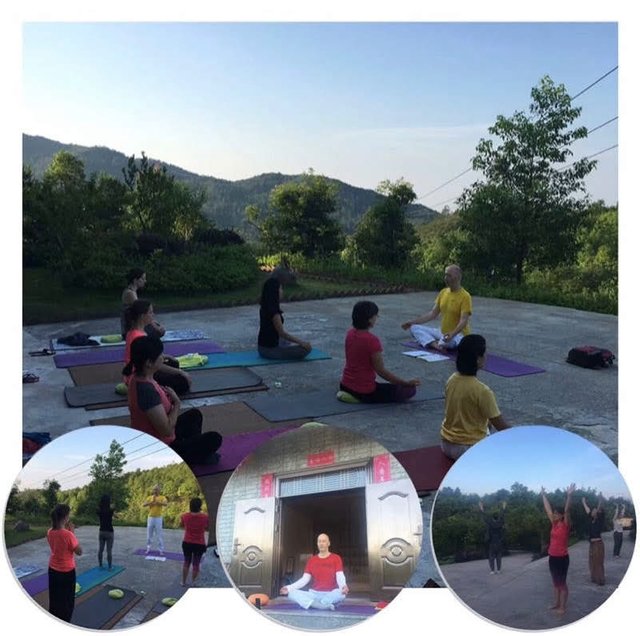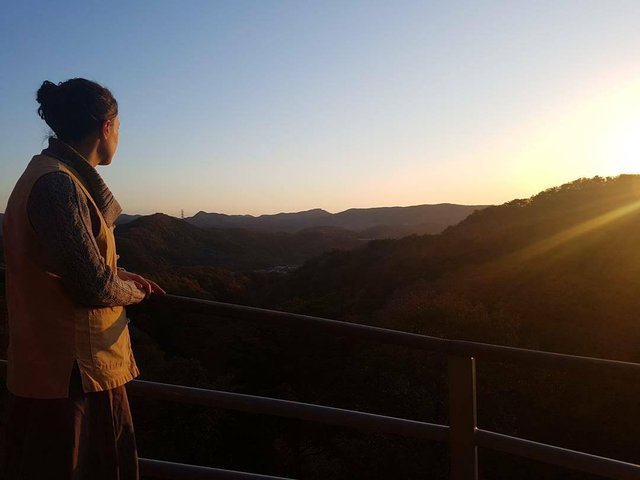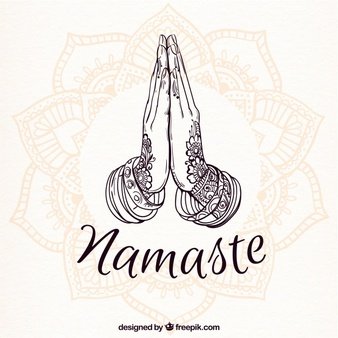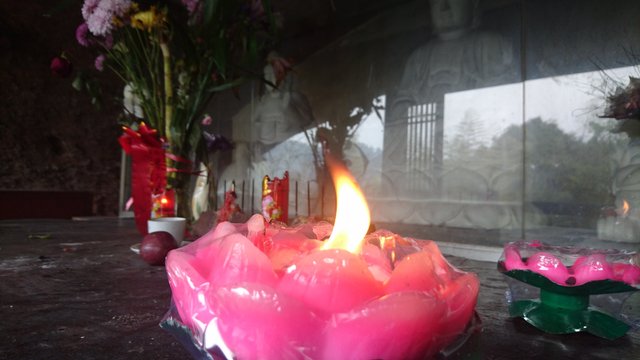Building a meditation practice
When I first dipped my toe into meditation nearly six years ago, I remember my practices being consistently plagued with the thought of “what exactly is it that I am supposed to be doing right now?” I listened to podcasts about meditating, read mindfulness blogs and downloaded dozens of guided materials. Despite spending considerably more time researching meditation than I was spending, you know, meditating, it would months before I felt like I was doing something someone else would call “meditating.” It would be years before it became something I looked forward to.
I wanted to sit down and write out exactly what it is that I do when I meditate, not because I believe this is the “proper” or “right” way to meditate, but because there are so most materials I have found leave the “doing” of meditation in some abstract, almost unattainable, form. Writing this piece felt more like a practice in vulnerability than one of ego. I am hoping that it may be useful to anyone out there who just wants a place to start, unmarked by silly voices or subjectively distracting music.
I think it may have helped me in the beginning if I had found such a piece outlining meditation as a structural progression – where I could have had a sense of process and advancement. As such, this is what my practice looks like – not because it is what it is supposed to look like, I actually have the feeling that many would say it is contradictory to the nature of meditation to force the practice in a direction, but this is how my personality (ego – as Watts would say) has shaped my journey. My meditation practice runs through three successive phases, each of which I built as my practice grew. On any given day, it is my intention to make it through all three, although that is not always the case.
I learned several years in that yoga was developed as a technique to prepare the body to sit in meditation for long periods of time. I usually flow through several asanas before I begin to meditate. Above: A sunrise practice somewhere outside of Santa Marta, Cuba. March 2015. Photo Credit: Yacine
My Foundations
This practice is built around my personal struggle with anxiety, which I have spent a decade dissecting and managing. I learned that feelings of anxiety are most directly caused by strong vibrations of the amygdala. Often, for me, this took the form of panic. As if something is moving so fast it will consume me – and I will have no control over it. In fact, something is moving too fast. My amygdala. I do, however, have control over it. Just like anything else – it takes only practice. It is for this reason that I started meditating in the first place – to train my mind; so that when the vibrations are too strong, I might soothe them and, occasionally, render them still.
Alan Watts talks a great deal about how mindfulness comes from realizing that you are not your thoughts. Today this idea is a core component of CBT. I like to consider it as one part of my brain (the prefrontal cortex) learning to train the other part of my brain (the amygdala and the hippocampus) to work better together. The first step then, is to isolate the two. To put one’s self in a position where one is watching the amygdala, rather than being controlled by it. For this reason, I start with what could be described as a mindfulness meditation. I have heard mindfulness meditation described as the act of paying attention to one’s breath as it moves through the body. It is also characterized as a focus on one’s thoughts while remaining unattached to them.
1. Feeling my own space
I start by feeling my body against the ground. I want to feel myself from the inside, so I can look at parts of myself, as myself, creating a division of my own internal universe from the external one(s). For me, this begins with noticing the friction between that myself and the external world – without being affected or considering any impacts of the external world. Simply, noticing it. Almost always, I begin my practice lying in Shavasana. I focus on the way my body feels against the ground from the inside. I move from my heels, up my legs, to my hips and my tail bone, focusing my attention just inside my skin; feeling my experience in these single places, from inside my skin. I move up my back, to my shoulders and down each arm. Lastly, I move up my neck, which is often not touching the floor, so I focus on what it feels like against the air. I try to feel the hairs moving in any semblance of breeze or internal tension. Then I move up the back of the head.
As I move through each part of my body, if I find myself distracted, I don’t move on; I stay there, until I can refocus myself thoroughly. If at any time I feel as if I cannot get my mind to be calm, I try to visualize my amygdala and picture the hippocampus gently holding it still. I also use a counting practice that I learned during a temple-stay in Korea. You count forwards from one to ten, and backwards from ten to one, at the same time, matching the sets with your breath as you go. (1 inhale, 10 exhale, 2 inhale, 9 exhale, 3 inhale, 8 exhale, 4-7, 5-6, 6-5, 7-4, 8-3, 9-2, 10-1.)

Golgulsa Temple, Gyeongju-si, Korea. November 2017. Photo Credit: 지민성
I move my focus from the back of my head to the front of my head. I tense up my forehead as much as I can – then release it in a big exhale. I do the same thing for my eyes, my nose, my cheeks and my mouth. Then I begin to focus on my breath. The aforementioned counting exercise is very useful here. Sometimes I start with that. Other times I can focus on my breath moving through my body entirely from the inside. First into the chest, filling the lungs; then the stomach, cooling the intestines and the kidneys; through the arms, breathing length into the muscles; and finally pushing blood down through my legs and my toes. I have found that thinking like this helps me focus on distinct parts of my body while keeping me interested. It also incites large breaths, as I am actively trying to do something with my body that I am visualizing in my mind. Most importantly, it stirs up gratitude for all the parts of me I otherwise spend little or no time thinking about.
2. Watching my mind
From here I begin what I would consider the second stage of my practice. Now that I have detached the part of me that is watching, I focus on my mind. I rest in my body, let my breath become natural, and watch where my mind goes. This might sound like the part where it gets boring – what are you doing in the mean time? However, the deep breathing from the previous stage momentarily fills me with enough endorphins to be comfortable just … being comfortable. Before long, a thought comes. The goal here is to notice it. To hold your mind centered – to watch the thought. Don’t engage with it. Don’t judge it. Let it pass. Bring yourself back to that neutral state of just being comfortable. Sometimes I visualize my amygdala as if it were the head of a passerby, turning to observe that thought that just came by. I visualize pushing it gently back into place, facing forward, so to speak. Other times I focus further on my breath, sometimes I need to count, and still other days I can just be in this place.
Somewhere in this stage I sit up, cross my legs and place my hands on my knees. I like changing my position at this point in my practice because it gives the sense of fresh air to sit with my lungs open – and my mind is clear enough now that my first thought is not that I would rather slump over. Many people prefer to do this type of practice while looking at something, usually a candle of some sort, giving you something to do while watching your mind. I have found that opening my eyes throws me off center – but maybe someday.
Budhist altar in Wuyishan Mountain, Wuyishan, China. February 2018
I usually cannot stay in this second phase very long. My intention is for a bit lying down and a bit sitting up, remembering that bringing one’s self back from distracting thoughts is the practice, not a failing.
3. Loving-Kindness
The third stage of my practice is a “loving-kindness meditation.” I first tried to loving-kindness meditation on its own, only to struggle with the same eventual boredom and lack of attention that I suffered in other types. Yet, I have found when I engage with this after being mindful, I am able to focus more on the feeling of compassion. Loving-kindness meditation involves taking all of that focus that you were just placing on your body, on your breath, on watching your mind, and turning it towards a feeling. The feeling of loving-kindness or compassion.

Dinei Village, Meditation Retreat. April 2018. Photo Credit: Sefanie
Most guided practices I found begin by focusing on one's self – this was difficult for me at first. I incorporated a few other strategies I had learned from my journey in psychological development. I read somewhere that the things you long to hear most from other people are typically the things you most need to hear from yourself. Several months before I started incorporating this into my meditation, I made it a habit to pay attention to my attention seeking behavior. What was it that I wanted? What was it that I was seeking from others? What were these words I wanted others to say to me? I would write them down as messages to myself. Often almost always these were precepts that reflect the most basic of fears ingrained into children within “western” society. I started saying them to myself in the mornings. Sometimes they would change or evolve. Some I would believe and not need to hear anymore. Some would stay.
At the moment I have five lines – none more than four or five words – that I say to myself to begin this stage of my practice. They start, with the most basic of all: “I love you.” After going through these (and, by this time, almost instinctively pairing them with your breath,) it becomes much easier for me to engage with the loving-kindness meditation towards myself. Loving-kindness meditation is difficult, particularly for those of us who struggle with vulnerability. (Here is a great guided mediation that I needed to really learn this practice.) As I mentioned, loving-kindness meditation involves transferring that sense of mental observation and fullness away from the body and the mind and towards a feeling. (You can also focus on this feeling stemming from your heart.) I focus on growing this sense of compassion towards myself as I am saying these messages. Then I move on to what is the (typical) loving-kindness mantra: “May you be happy. May you be healthy. May you live with ease.” I usually run through these lines twice.

Sunrise at Golgulsa Temple, Gyeongju-si, Korea. November 2017. Photo Credit: 지민성
Then one turns that sense of love and compassion onto someone else. Picture one of the people you love most in the world in your mind. I try to picture them laughing or otherwise doing something I find endearing. The goal is to transition that feeling of compassion onto them. Your mind is viewing their image while focusing on that feeling. Then you repeat the mantras again, two times. “May you be happy. May you be healthy. May you live with ease.” Next, picture someone who you like, maybe a friend or a distant family member. The goal is to take that same intensity of compassion and connection that you just felt for your loved one and transition it onto this person. I will often stay focused on the feeling and simply switch the image in my mind. The image becomes a bit like the thoughts I was watching earlier, observing without engaging with. It is only when I am sure that I have held that same intensity of compassion that I really focus on the person. Then I breathe through the mantras. Now think of a person that you see often but do not really know. The service economy presents a plethora of people to choose from for this step. Again, transfer that same intensity of compassion towards their image. Focus your mind on the feeling – and see only their image. Breathe through the mantras in the same way.
The next part is the most difficult. Think of someone you dislike – but only of their image. Don’t let your mind wander onto the things they have done or the reasons you dislike them. Do not let yourself feel the way they make you feel at all. Your mind is trained on that feeling of compassion. Focus only on that feeling, seeing only their face, and breathe through the mantras. The final component is to step back and see the entire world at once. I usually picture a very “kumbaya” image of our planet with a ring of people holding hands around the center. Transfer the compassion towards all of humanity. Breathe through the mantras.
I have found that I usually end up smiling through this stage of my practice. Sometimes I end up crying – because I am a happy-crier. It is remarkably fulfilling.
All the best in your practice and please don't hesitate to share any insights you may have from your own journey.



Congratulations @legalnomad! You have completed the following achievement on the Steem blockchain and have been rewarded with new badge(s) :
Click here to view your Board of Honor
If you no longer want to receive notifications, reply to this comment with the word
STOP